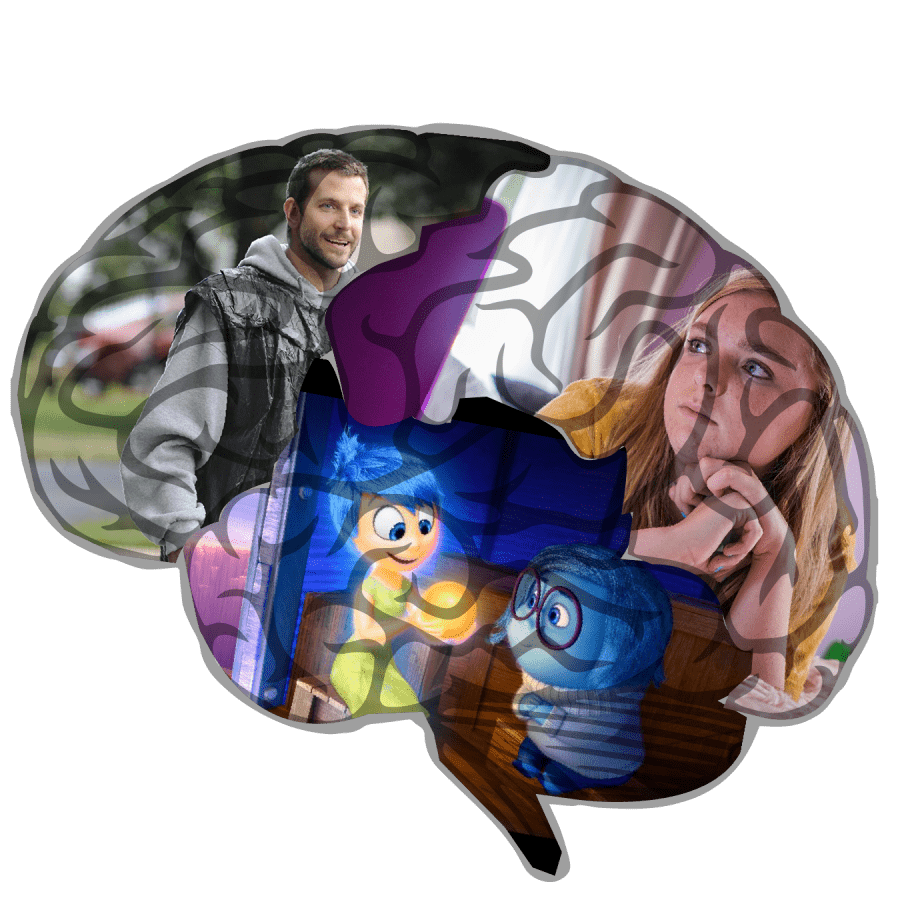From the exaggerated insanity of figures like Jack Torrance in “The Shining,” to the consuming narcissism of Travis Bickle in “Taxi Driver,” the entertainment and media industries have had massive stakes in contributing to the stigma of mental illness in society through their misrepresentation of it in films, with this having real-world consequences that are hard to notice at first glance. This stigma is one that is ever-evolving, especially through media, and can only be dwindled through responsible representations of mental illness by utilizing honesty, ethics and confidence in their execution. Thankfully, we have seen a plethora of accurate depictions of mental illness in Hollywood with films like “Eighth Grade,” “Silver Linings Playbook” and even Disney’s “Inside Out,” that educate audiences young and old on the normality of mental illnesses and their looming presence in many Americans’ lives.
The stigma of mental illness and its cause-effect relationship with media is one that acute media consumers like DePaul senior and communication and media major Marty O’Connell are aware of.
“The stigma has started to vanish over the past decade. Society has come around on this idea of mental health and mental illness being a treatable thing now,” he stated.
DePaul junior Halle Wagner is also aware of the responsibility that the entertainment industry has in informing audiences on such integral and intrinsic topics, with films such as “Silver Linings Playbook” contributing positively to the correction of these destructive stigmas.
“You can tell that these characters are struggling and are trying to get help; the film doesn’t ‘other’ them,” Wagner said.
Mental illness is not just a national issue, but a worldwide one as well, with international DePaul sophomore Damita Menezes having a unique and broadened perspective on this issue in relation to media.
“The U.S is very understanding when it comes to mental health, but other countries are much more judgmental,” Menezes said. “A family member of mine has minor schizophrenia. People thought she was insane, but she got medicated and she is doing so much better.”
She also believes that even social media has a crucial role in the stigmatization and glorification of mental illnesses such as depression.
“Social media adds to this stigma in the ways of being an attention-seeking thing in which people take advantage of words like ‘depression.’ It desensitizes it,” she said.
Seeing cinema, and even social media, having such an innate role in society’s understanding of what mental illness is goes to show how significant of a role media stakeholders have in producing ethical content, with media like Netflix’s “13 Reasons Why” leaving some viewers dissatisfied with the irresponsible ways that it deals with such congenital and widespread issues. Halle, Marty and Damita all gave this as a prime example of unethical treatment of mental health in media, with Halle having some choice words for the repercussions of the show’s depictions.
“It seems like the show is telling audiences that you can kill yourself if you are angry at your friends. It shows Hannah’s suicide as revenge for people being mean to her,” she stated.
Even though it is apparent that the entertainment industry is taking steps toward creating representative and ethical content surrounding mental illness, it is clear that this is a stigma that can only be diminished through more accurate portrayals and widened perspectives that remind those with mental illnesses that they are not alone; that there is content out there that can not only empathize, but sympathize with their struggles.



Harold A Maio / May 20, 2019 at 5:41 am
“…the entertainment and media industries have had massive stakes in contributing to the stigma of mental illness ”
The print media are the main culprits when it comes to assigning a stigma to mental illnesses. I note your participation.